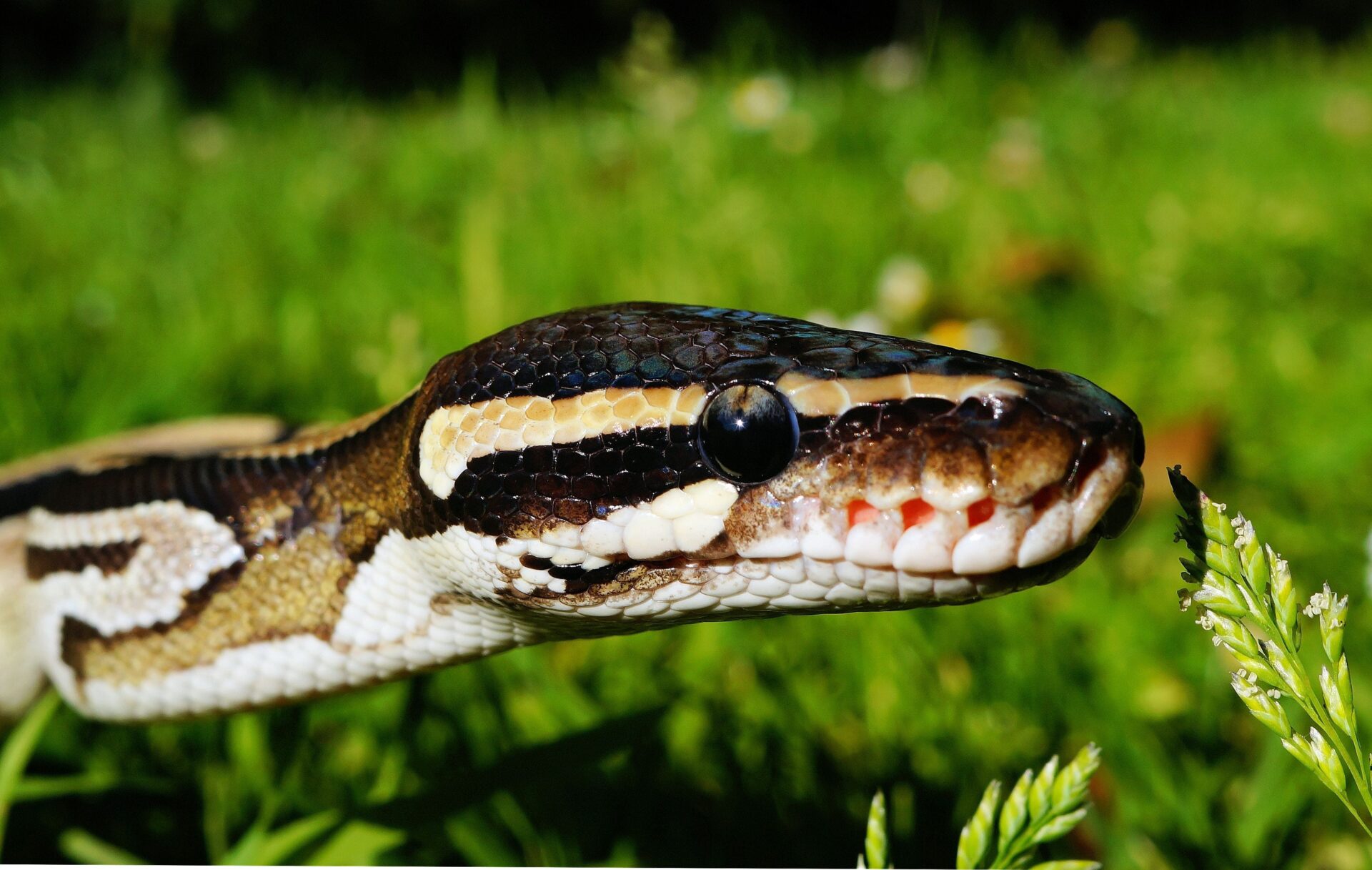Ball pythons are one of the most popular pet snakes and can make great companions for those who are willing to put in the time and energy to properly care for them. This guide will provide you with all the information you need to know about caring for a ball python, from housing and feeding requirements to general handling tips. In order to ensure that your ball python stays healthy and happy, it is important to be familiar with its natural needs and behaviors. With this knowledge, you can provide your pet with an enriching environment that will help it thrive.Choosing a ball python can be a daunting task, as there are many different varieties and morphs available. Before making a decision, it is important to consider the basic needs of the snake and research various morphs to determine which will best fit your lifestyle.
First, consider the size of your living space. Ball pythons can grow to anywhere between 3-5 feet in length, so make sure you have enough room for them to move around comfortably. Additionally, ball pythons require an enclosure with an ambient temperature of 78-80 degrees Fahrenheit and a basking spot temperature of 88-92 degrees Fahrenheit. Consider the temperatures in your home before choosing a snake, as it may be difficult to maintain proper temperatures in some locations.
Second, research the various morphs available. Morphs are genetic mutations that change the physical characteristics of the snake – changing their coloration or patterns on their skin – and they can vary greatly in price depending on how rare they are. Some popular morphs include Albino Ball Pythons, Piebald Ball Pythons, and Clown Ball Pythons among many others.
Finally, check with local breeders or pet stores for availability and pricing information. Make sure to ask questions about your chosen morph’s temperament and any health problems it may have before making the purchase. It is also important to make sure you buy from a reputable source in order to ensure that you get a healthy animal that has been well taken care of.
Choosing the right ball python for you is an important decision – make sure you do your research beforehand so you can make an informed decision that fits your lifestyle and budget!
Setting Up the Right Enclosure
Having the right enclosure for your pet is essential to their health and well-being. A proper enclosure can provide a safe and secure place for your pet to relax, play, and exercise. It can also help protect your pet from predators and other dangers in the environment. When choosing an enclosure for your pet, there are several factors you should consider.
Size is an important factor when selecting an enclosure for your pet. Your pet needs enough space to move around freely and to play or exercise. Depending on the type of pet you have, you should make sure that the enclosure is large enough to accommodate them comfortably. For larger animals like snakes or lizards, you may need to use multiple enclosures if they are too big for a single one.
Material is also a factor when selecting an enclosure for your pet. If you choose a glass enclosure, it needs to be strong enough to handle any potential impacts from your pet’s movements or activities inside it. For smaller animals like hamsters or gerbils, plastic enclosures are often a better option as they offer more ventilation than glass enclosures do.
Security is also an important factor when selecting an enclosure for your pet. You want to make sure that the door latches securely and that there are no gaps where predators or other pests could enter the enclosure. If you are using a plastic enclosure, make sure it’s strong enough that it won’t break easily if someone tries to force their way in.
Finally, ease of cleaning is another factor when selecting an enclosure for your pet. You want something that’s easy to clean so that you don’t have to spend too much time scrubbing and washing out the dirt every day. Glass enclosures are generally easier to clean than plastic ones as they don’t absorb odors as easily as plastic does.
By taking into account these factors when choosing an enclosure for your pet, you can ensure that they have a safe and secure place where they can feel comfortable and enjoy themselves without worrying about danger or messes in their environment.
Substrate and Furnishings
Aquatic turtles require a substrate such as sand, gravel, or small pebbles to provide traction for swimming and climbing, as well as for burrowing. As turtle owners if you are not sure which substrate to use, it is best to consult your local pet store for help. With the substrate selected, you should also consider adding some aquatic plants and furnishings. Live plants will provide hiding spots for turtles and they also act as natural filters for aquariums. In addition, adding rocks, logs, and driftwood can help create a more natural environment that can be explored by the turtle.
It is important to remember that any rocks or wood added should be free of any chemicals or abrasives. This will ensure that the furnishings will not harm the turtle in any way. Also, when selecting live plants make sure they are labeled as safe for aquatic turtles otherwise they may be toxic and cause harm to the animal. Once you have prepared the habitat with substrate, plants, and furniture your aquatic turtle will have an environment where it can thrive!
Temperature and Humidity Requirements
Temperature and humidity requirements are essential for a variety of applications, ranging from food safety to data centers. Temperature and humidity control can prevent the growth of harmful bacteria or mold, as well as ensure that the environment remains comfortable for human occupants. In many cases, maintaining specific temperature and humidity levels is also essential to the optimal functioning of sensitive equipment.
In order to create an ideal environment for whatever application is necessary, it is important to understand both the temperature and humidity requirements that must be met. In most cases, it is necessary to maintain an average temperature between 68-77 degrees Fahrenheit (20-25 degrees Celsius), with a maximum daily variation of 10 degrees Fahrenheit (5.5 degrees Celsius). Relative humidity should be kept at a level between 40-60%, with a maximum daily variation of 5%.
In order to meet these requirements, it may be necessary to install air conditioning or heating systems, dehumidifiers, humidifiers, or other climate control systems. Additionally, it may be necessary to make use of monitoring systems in order to accurately measure temperature and humidity levels on a regular basis. By understanding the appropriate temperature and humidity requirements for any given application and taking steps to ensure they are maintained as closely as possible, businesses can improve safety while also optimizing their operational efficiency.
Feeding Guidelines For Ball Pythons
Feeding ball pythons can be a challenging task, but with the right guidelines and knowledge, it can be done safely and successfully. Ball pythons are carnivores and require a diet of live prey such as mice and rats. It is important to feed your ball python appropriate sized prey items that are no larger than the widest part of their body. Feeding too large of a prey item can cause choking or impaction in your ball python. Additionally, you should avoid feeding wild caught animals as these may harbor parasites or other diseases that could harm your pet snake.
It is important to feed your ball python on a regular basis; generally once every 5-7 days for an adult ball python. Young ball pythons should be fed more regularly, 2-3 times per week. If you find that your snake is becoming overweight, simply reduce the frequency of feedings or decrease the size of the prey item being offered. Overfeeding can lead to obesity in snakes, which can lead to other health problems such as skin infections or respiratory infections.
When offering food to your ball python, make sure it is thawed properly and at room temperature prior to feeding. Never offer live food that is larger than the widest part of your snake’s body; this could result in injury or death for your pet snake. Always supervise any feeding sessions and remove any uneaten prey items afterwards to avoid attracting unwelcome pests into your home. Be sure to observe your ball python after each feeding session; if you notice any signs of distress such as regurgitation, contact a veterinarian immediately for assistance.

Handling Guidelines For Ball Pythons
Ball pythons are a great beginner snake for reptile keepers, and they are known for being docile and easy to handle. However, it is important to learn proper handling techniques in order to ensure the safety of both you and your snake. Here are some tips for handling ball pythons:
First, make sure your hands are clean before handling your snake. Reptiles can be sensitive to bacteria or germs on human hands that could cause illness or infection. Wash your hands thoroughly with soap and warm water before you handle your snake.
Second, when you pick up your snake, make sure to support its entire body with both hands. Do not pick up the snake by the tail as this can cause injury or discomfort. Make sure you have a secure grip so that the snake cannot escape while you are handling it.
Third, give the snake time to adjust to being held before you start moving around with it. If the snake is uncomfortable it may become agitated or try to escape, so take it slow at first and let the snake get used to being held before you start walking around with it.
Fourth, avoid sudden movements when handling a ball python as this can startle them and lead to stress or agitation. Move slowly and carefully when holding a ball python so that they do not become scared or stressed out by sudden movements.
Finally, always supervise children when they are handling ball pythons as they may not have the same level of experience or knowledge as an adult keeper and could accidentally injure the animal if they do not know how to handle it safely and correctly.
By following these simple guidelines for handling ball pythons, you can ensure that both you and your pet stay safe during interactions!
Signs of Stress In Ball Pythons
Stress is a common issue in ball pythons, and can be detrimental to their health if not monitored. Common signs of stress in ball pythons include decreased appetite, excessive shedding, and aggression. If your ball python is displaying any of these signs, it may be time to take a closer look at their environment and make some changes to reduce their stress levels.
Decreased appetite is one of the most common signs of stress in ball pythons. If your snake is refusing food or eating less than usual, it could be a sign that they are feeling stressed. This can be caused by factors such as improper temperature or humidity levels in their enclosure, or even an inadequate diet. If you suspect this may be the cause of your snake’s decreased appetite, make sure you adjust the enclosure accordingly and provide them with a nutrition-rich diet.
Excessive shedding can also indicate that a ball python is feeling stressed. This may occur due to improper husbandry conditions such as too low humidity levels or too much handling. Make sure you are providing them with adequate humidity levels (50-60%), as well as giving them enough space to feel secure and comfortable in their environment.
Aggression can also be a sign of stress in ball pythons. If your snake is displaying aggressive behavior towards humans or other animals, it could mean they are feeling threatened by something in their environment or are feeling overwhelmed by too much handling. To reduce this behavior, try reducing the amount of handling they receive each day and making sure they have plenty of hiding places available so they can feel secure and safe.
If you suspect that your ball python is feeling stressed, it’s important to take steps to reduce their stress levels as soon as possible. Check the temperature and humidity levels in their enclosure, provide them with an appropriate diet, give them ample hiding places for security, and reduce the amount of handling they receive each day in order to help keep your snake happy and healthy!
Breeding Ball Pythons
Breeding ball pythons can be a rewarding experience for any reptile enthusiast. It is important to understand the science and proper techniques behind successful breeding before attempting it. Knowing the basics of ball python care and health before breeding is also essential. This includes understanding what temperatures and humidity levels are ideal, as well as providing a proper diet and adequate space.
When selecting a pair of ball pythons to breed, it is important to consider the genetic characteristics of each individual. This will help ensure that the offspring produced from the pairing will be healthy and hearty specimens. It is also important to research any potential health issues that may be passed down from parent to offspring, such as neurological disorders or respiratory infections.
The next step in breeding ball pythons is preparing a suitable enclosure for the breeding process. The enclosure should replicate natural conditions as much as possible, with plenty of hiding spots and other areas for the snakes to explore. The temperature should range between 78-82 degrees Fahrenheit, with humidity levels between 50-60%. These conditions will help stimulate breeding behavior in both male and female ball pythons.
Once an appropriate enclosure has been established, it is time to introduce the pair of snakes into it. This should be done carefully, with both snakes being observed closely for signs of aggression or dominance behavior towards one another. If either snake shows signs of distress or aggression, they should be removed immediately from the enclosure until such behaviors have subsided.
After introducing the pair into their new enclosure, it is time to initiate the actual mating process. Mating usually occurs during either spring or fall when temperatures are warmer and humidity levels are higher than normal. When this happens, males will often circle around females while biting them on their tails in an attempt to encourage mating behavior from her.
Once mating has occurred, it is important to monitor both snakes closely for signs of pregnancy or egg-laying behavior in female ball pythons. During this time, they should be provided with extra nutrition and kept in an environment with slightly higher temperatures than normal (around 85 degrees Fahrenheit). After about two months gestation period has passed, female ball pythons will typically lay a clutch of eggs which can then be incubated until hatching.
Breeding ball pythons can be an incredibly rewarding experience if done correctly by knowledgeable individuals who understand all aspects involved in this process. With proper research and preparation beforehand, anyone can become a successful breeder of these amazing reptiles!

Conclusion
Ball pythons are an excellent choice for beginner snake owners due to their low-maintenance needs and gentle temperaments. When properly cared for, ball pythons can live a long and healthy life in captivity. It is important to research the needs of the species before taking on the responsibility of owning one. The enclosure should be large enough to accommodate the growth of the snake, and it must be kept clean and secure at all times. Ball pythons should be fed a variety of prey items appropriate for their size and age. Ensure that temperatures are monitored carefully, as ball pythons are sensitive to both cold and heat. Lastly, provide your ball python with plenty of hiding spots and enrichment opportunities to promote good health and wellbeing. With proper care, your ball python can enjoy a long life in your care!




